The latest seaweeds | see how many you know 1
In the vast and rich ocean, in addition to all kinds of animals, there are also a great variety of marine plants. Marine plants can be simply divided into two categories: lower algae and higher seed plants. Among them, the size of the algae is very different, the smallest marine single-celled algae is so small that it can only be seen under a microscope, while the largest macroalgae can be up to two or three hundred meters long, which is called the crown of algae.
Seaweeds are a large family of marine organisms. Scientists according to the habits of seaweeds, seaweeds are divided into planktonic algae and benthic algae two major types. Today, we mainly recognize the marine benthic seaweeds are what:
1. Kelp
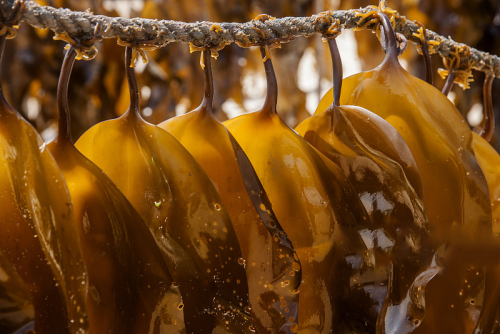
Kelp belongs to the family Kelpaceae of the phylum Brown Algae, the algal body is brown, long banded, leathery, generally 2-6 meters long and 20-30 centimeters wide. The algal body is distinctly divided into the solidus, the stalk, and the phloem. The blade is composed of epidermal, cortical and medullary tissues, with sporangia in the lower part of the blade. It has a mucus cavity and secretes a slippery substance. Fixation apparatus tree-like branches, used to adhere to the seabed rocks, growing in the water temperature is low, the current of the sea area grows well, on the contrary, the growth is very slow and susceptible to disease. The distribution range of natural growth is mainly in the North Pacific Ocean and Atlantic Ocean coastal areas, and in China it is limited to the Liaodong Peninsula and Shandong Peninsula sea areas. Artificial culture has been popularized to the coasts of Zhejiang, Fujian, Guangdong and other places.
2. Undaria pinnatifida
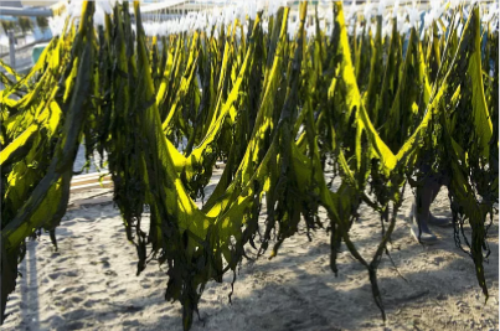
Undaria pinnatifida belongs to the family of brown algae, family Hinophyceae, and the leaves are pinnately divided, much like a kirtle, hence the name Undaria pinnatifida. It can be clearly divided into three parts: fixer, stalk and leaf. Undaria pinnatifida is a temperate seaweed and can tolerate high temperature. China's natural growth of Undaria pinnatifida is mainly distributed in Zhoushan Islands and Shengsi Island in Zhejiang Province. It has also been cultivated in Weihai, Qingdao and Yantai in Shandong Province.
3. Sargassum
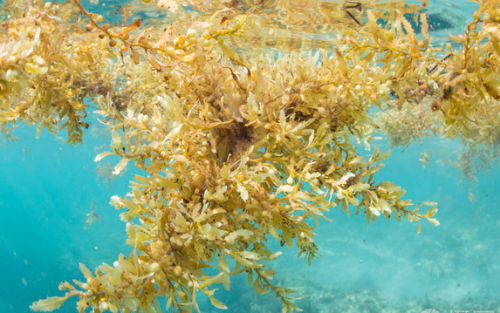
Sargassum belongs to the phylum Brown Algae, the algae body is yellowish-brown, divided into three parts, namely, the solid apparatus, the main stem and the "leaf"; the algae body has a similar differentiation between the stem and the leaf, the stem is slightly three-pronged, and the leaf is mostly lanceolate, with an air sac. Most of the warm water species, widely distributed in warm water and warm water waters, such as the Sargasso Sea in Bermuda, North Atlantic Ocean (named for the floating collection of large numbers of Sargassum). China is one of the main production areas of Sargassum, there are sixty species, prevalent in Hainan and the coasts of Guangdong and Guangxi, especially Hainan Island and Chau Island and Weizhou Island, growing on the rocks in the middle and low intertidal zone. China's common sea artemisia, sea millet, rat tail algae, creeping branch Sargassum and so on.
4. Macroalgae
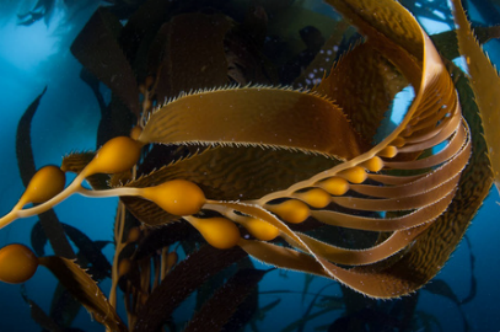
There are three main types of macroalgae commonly referred to as Macrocystis: Macrocystis MP (Macrocystis Integrifolia (Pyrifera)), Macrocystis LF (LessoniaTrabeculata (Flavicans)), and Macrocystis LN (LessoniaNigrescens). They are mainly distributed along the Pacific coast of America, from Alaska through Canada and the United States to Peru and Chilean algae. The length (up to 300 meters) and growth rate (up to 30 to 60 centimeters per day) of the macroalgae MP, for example, can be called the "world's longest". The undersea forest formed by macroalgae is one of the largest, most complex and dynamic ecosystems in the oceans, and was compared by Darwin to a generous tropical rainforest. Macroalgae LF and LN thrive especially along the Pacific coast of South America, where the Peruvian cold front from Antarctica provides cold water, rich nutrients, and a unique growing environment, making Chile and Peru, on the west coast of South America, a globally important seaweed-producing region.
5. Ascophyllum nodosum
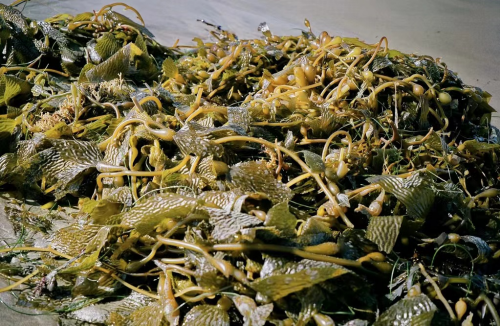
Ascophyllum nodosum belongs to ascophyllum nodosum in the Phaeophyta, with olive-colored bodies, frilly leaves, and a globule on them at regular intervals. Mainly distributed in the Atlantic coast of America and the northern coast of Ireland, mostly growing in the intertidal zone on the rocks, or the bottom of the sea, there is a very strong enrichment and absorption capacity, can be enriched in seawater nutrients, and metabolic synthesis of seaweed polysaccharides, mannitol, phenols, algal prionates, fucoidan polyphenols, kelp polysaccharides, fucoidan polysaccharides, cytokinins, and erythromycin dozens of biologically active substances.
6. Durvillaea antarctica
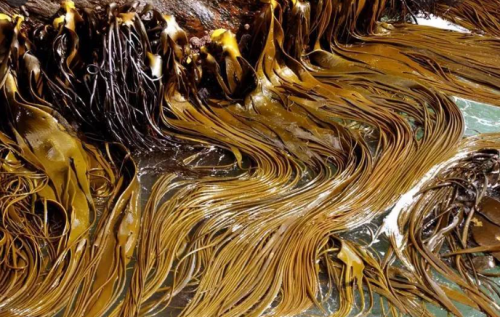
Durvillaea antarctica, also known as spaghetti algae, Antarctic bull algae (Durvillaea), belonging to the family of brown algae, is a rare blue noble food, belonging to the world's restricted mining resources. Like to grow in the cold, nutrient-rich waters, the internal organization of the algae body is honeycomb and filled with air, so that they are naturally buoyant. Durvillaea are highly resilient and can withstand high winds and waves. Durvillaea is a nutritious, tasty green natural food in the brown algae category of seaweeds, and is a wild and natural deep-sea plant; one of the most precious and rare members of the deep-sea plants. Because of the very strict conditions for the growth of Durvillaea, the world can only grow in small quantities in the unpolluted waters of the South China Sea coast of Chile.
7. Chondrus Ocellatus
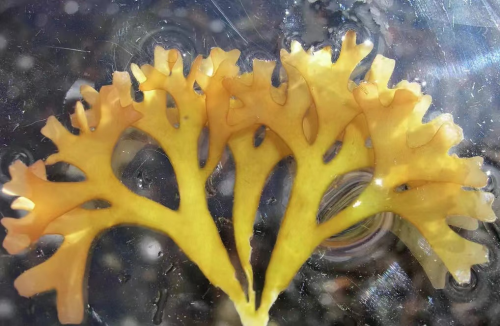
Chondrus Ocellatus, also known as deer hornwort, belongs to the red algae, cedar algae, Hordeum vulgare genus, its algal body is purplish-red, often green at the top, shaped like a fan, flat, grows in the intertidal zone on the rocks of the wind and waves are calm, mainly distributed in the Atlantic coast (the continent of Europe and the Atlantic Ocean of North America, the sea of rocky) and China's southeastern coast, as well as Qingdao, Dalian and other and the Yellow Bohai Sea area. Is an important economic seaweed, the production of carrageenan important raw materials. In China, there are mainly Chondrusocellatus, Chondrusarmatus, Chondrusnipponicus and so on.



 Mobile: 86-13012553585 15610518510
Mobile: 86-13012553585 15610518510 Phone (Fax):86-53283197178
Phone (Fax):86-53283197178 E-mail: admin@bluealga.com
E-mail: admin@bluealga.com Add:No.918 Lingang 8 Road Huangdao District,Qingdao China 266400
Add:No.918 Lingang 8 Road Huangdao District,Qingdao China 266400

